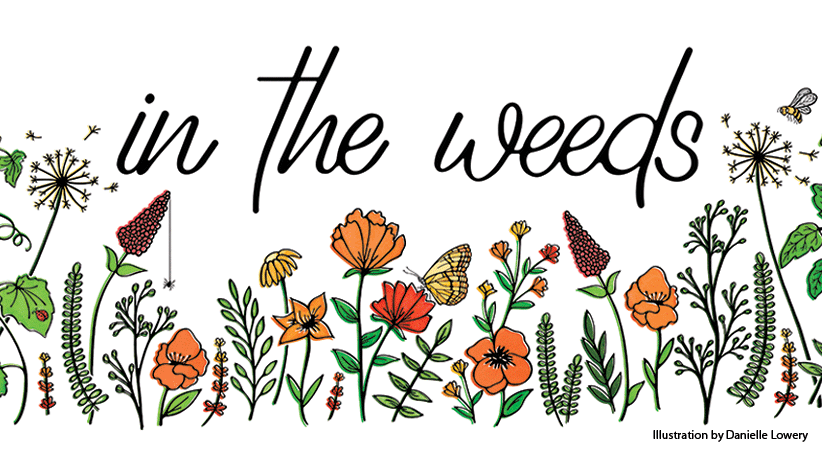Spring garden troubleshooting
Spring is full of anticipation and hope for a successful garden season. But it only takes a small hiccup to derail your grand garden plans. If you can predict a problem and take preventive steps, you’ll save time and labor (and frustration) fixing it later. Here are a few troubles that might come up in the spring garden and how to head them off before they become big problems.

1. Seedlings don't germinate
Seeds planted outside when the ground is too cold often fail to germinate and may rot in wet soil.
Solution
Before sowing seeds, use a soil thermometer. Insert the probe into the soil 1 to 3 inches deep and give it a few moments to get an accurate read. Do it in the morning for three days in a row to determine an average. Cold-tolerant crops can be planted when the soil is 45 degrees F, while crops like corn or beans need at least 65 degrees F. Consult a seed germination temperature chart, to find the ideal range for your crops.

2. Wet soil in spring
When early spring rains or melting snow leave the ground saturated, stepping into a perennial bed or tilling your vegetable garden too soon can compact the soil. Compacted soil reduces air movement and creates hard, clumpy soil that is difficult to plant and stifles root growth.
Solution
First, relax and try not to rush out and plant when it’s too wet. Next, grab a handful of soil and squeeze it into a ball. Toss it gently in the air and catch it—if it crumbles apart, it is dry enough to till or plant. If you must step into the garden while it’s still wet, lay down a board to distribute your weight.

3. Contorted crops
If twisted carrots, small onions, or barely-there radishes have been your veggie garden experience, overcrowding may be the cause. Overcrowded seedlings compete for water and space, often resulting in stunted or distorted growth.
Solution
To prevent overcrowding, thin the plants when they have one to two sets of leaves to the spacing listed on seed packages. If you don’t want to thin, try biodegradable seed tapes with seeds glued to the correct spacing. Also, if growing in containers or raised beds, give plants ample soil depth. Most vegetables need 12 to 15 inches of soil.
You Might Also Like:
How to Grow Root Vegetables
Radish Growing Guide
Watch Our Vegetable Garden Videos on YouTube

4. Irrigation frustration
Tangled hoses, drippy connectors and clogged emitters can be an irritation. Who wants to waste valuable time fixing hoses and laying out irrigation lines when your plants need water?
Solution
Organization is key! Label each hose end, irrigation line, coupler and emitter with a tag or tape and permanent marker so you know which hose goes where, which coupler attaches to what spigot, and even what emitter goes in which pot. This will save tons of time when you’re laying the lines out in the spring. Before you need to use it, turn the water on and check for leaks in your irrigation lines. Have extra parts on hand for repairs so you can get the system up and running with no interruptions.

5. Underperforming flower bulbs
Spring bulbs, such as daffodils (Narcissus spp. and hybrids) or hyacinths (Hyacinthus orientalis), have fewer and smaller flowers when they are overcrowded and ready to be divided.
Solution
Take pictures or mark with tags to remember where the bulbs are growing so you can divide them in the fall. Or, dig up and transplant them in late spring as the foliage collapses and before you forget where they were. Once the foliage turns yellow to brown, the bulbs have stored enough energy for the next year and can be transplanted. A benefit of spring division is you can plant near later-emerging perennials before they fill out and impede your work.

6. Lanky herbs
When left unpruned, woody herbs don’t put out new stems and leaves, which means that in spring, you might have leaves only at the tips of long, woody stems.
Solution
To prevent that look, herbs with woody stems, such as rosemary (Salvia rosmarinus), sage (Salvia officinalis) and thyme (Thymus vulgaris), should be harvested regularly throughout the growing season. Additionally, cut back by a third in early spring as new leaves emerge to encourage branching and a fuller appearance. Avoid cutting back to the woody stems because they will not sprout new leaves there. If it is too unsightly, just replace the plant.
You Might Also Like:
How to Preserve Fresh Garden Herbs
Grow an Herb Garden in a Container
Vegetable Garden Plan to Maximize Your Harvest

7. Rabbits & deer eating garden plants
Fresh spring growth and new transplants are especially tasty to rabbits and deer.
Solution
Deter rabbits and deer from tender new plants with barriers made of chicken wire, wicker, metal fencing or row cover fabric. Depending on how often these unwanted guests come to dine, the barriers may need to be in place for the duration of the plant’s lifespan, so make sure it can accommodate the mature size if critters continue to be a problem. Granular or spray repellents can be effective — start applying early in spring to deter pests before they establish a regular stop in your garden. Reapply often and after every rain.

8. Overgrown ground covers
If you grow ground covers, you may find that they can look stringy or tangled, encroach on a path and catch dead leaves and debris. Even though many are evergreen, they could use rejuvenation in spring.
Solution
Mow or shear off ground covers, such as mondo grass (Ophiopogon spp. and hybrids), periwinkle (Vinca minor) and plumbago (Ceratostigma plumbaginoides), close to ground level in early spring before they bloom. This tidies up the planting and keeps it under control. Rake off clippings and toss them in the compost pile, or let them fall to the ground. If the clippings are small enough, they will self-compost.
















